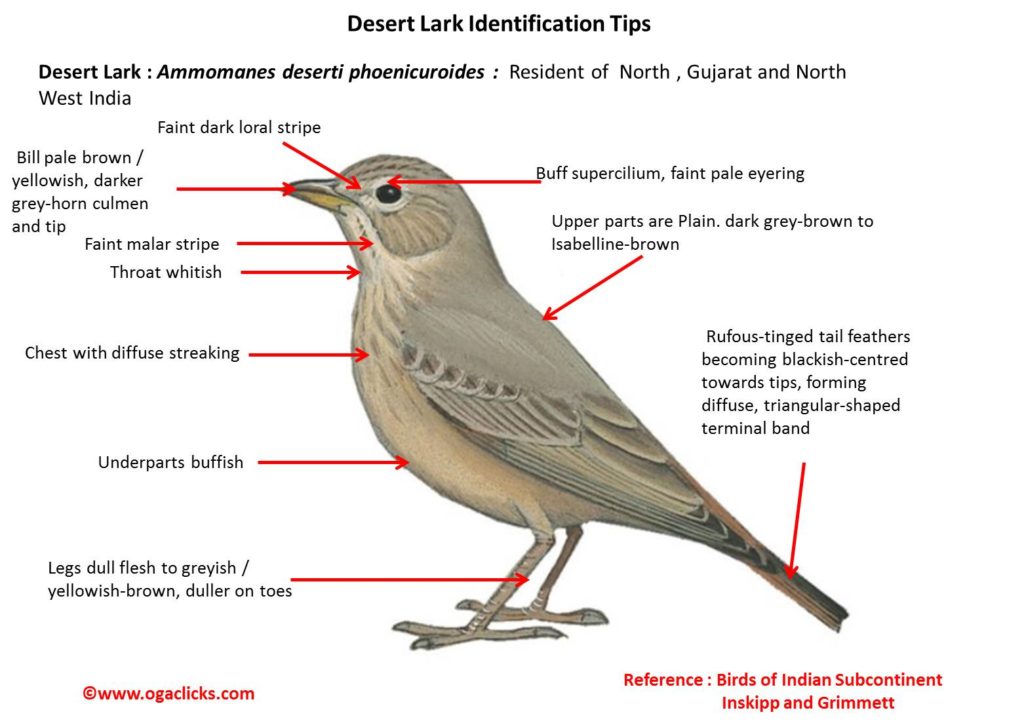
Desert Lark Ammomanes deserti
Etymology:
- Ammomanes : Greek word ammos – sand; manes- passionately fond of
- Deserti : Latin for Desert
Vernacular Names: Baluchistan: Dashti-chajok, Kompi
Distribution in India: Resident in North West India
Description: Size of 15-17 cm. It is a medium-sized, robust lark with relatively large head, rather heavy bill , longish wings with long primary projection, rather short tail; hind claw is short, slightly curved. The nominate race has short, indistinct buff supercilium, faint pale eyering, faint dark loral stripe; plain dark grey-brown to isabelline-brown above, rump is tinged rufous. The primaries have rufous outer webs, relatively long and broad outer primary, tertials are brownish. It has rufous-tinged tail feathers that are blackish-centred towards tips, forming diffuse, triangular-shaped terminal band; throat is whitish, underparts are buffish, chest has diffuse streaking; iris is dark brown. The bill is pale brown to yellowish, with darker grey-horn culmen and tip; legs dull flesh to greyish or yellowish-brown, often duller on toes. Both the sexes are similar.
Habitat: It is found in desert or semi-desert, mainly in lowlands. It is found on rocky or stony hill slopes and flanking escarpments; avoids flat and sandy landscapes .Occurs along roadsides in some areas. It is found from lowlands, up to 2000 m in mountains.
Food habits : It has a mixed diet; small seeds and insects eaten in highly variable proportions, according to areas and seasons. The chicks are fed mainly with insects. It forages singly or in small groups, by walking on ground or among stones; frequently picks in dung; in shrubs and capturing flying insects. The hard food items are broken against rock or other solid surface before swallowing. They drink water, and large numbers may gather at water sources in summer.
Breeding habits : They breed in Feb–June India ,Africa and Western Asia. It is Monogamous and territorial. The mating display by male is a song flight rather brief, either horizontal between two eminences, with deep undulations, or steep ascent from and return to ground, with or without horizontal phase. The nest is built by both sexes, on ground beside rock, grass tuft or small shrub, or in exposed site, made from grass stems and other fine plant material, lined with softer material, with rampart of small stones on exposed side, or surrounded by small stones when in open site. They lay a clutch of 1–5 eggs, The incubation is done by female alone. The incubation period is 10–11 days.The chicks are cared for and fed by both parents, The nestling period is 9–11 days and fledging period is 14–15 days.